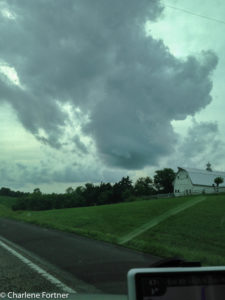*This post is part of a series about a road trip completed in 2015. For the first post in this series click here.*
When I lived in Alaska, driving six hours from point A to point B without stopping seemed like the norm. There was beautiful scenery to look at and many animals to keep an eye out for. Nowadays, I find it difficult to drive such a stretch without stopping at least once. Perhaps the highways on the east coast do not provide enough visual stimulation to keep my interest. Or my stamina behind the wheel is waning, who knows?
I usually plan a stop in advance for most long car trips. For instance, my favorite stopover on my NC to DE trip is Eastern Shore of Virginia NWR just north of the Chesapeake Bay Tunnel. The refuge visitor center is secluded, offers a dog walking area, clean bathrooms and is never busy, unlike the highway rest stop less than a mile away.
Planning Stopovers
When I planned my summer road trip I wished to maximize the amount of time spent at my destination. This called for extended travel days at the beginning and end of my trip. I carefully looked for places where I could stretch my legs and get in a little bird watching. Ebird was an essential tool in this part of my research. Their hotspot tool enabled me to find high-density locations nearest to my route.
Planning for safe highway rest stops with dogs is a little more tricky, but there are quite a few websites that provide listings for free dog parks and pet-friendly rest stops along the major US Interstates.
I wrote about my stopover at Mermet Lake WMA already, but I would like to share my favorite photo again, a stunning Great Blue Heron.
Unplanned Breaks
In the case of a road trip, it is always a good idea to keep an eye out for a great opportunity. Unexpected photographic inspirations or unique roadside attractions can pop up without notice. Sometimes traffic, or a lack thereof, allowed me to observe the weather or animals from the road without fear of causing an accident. I was able to slow down to a stop on the road or pull off on the shoulder to snap a few photos along the way.
The photos below were taken with my iPhone 5c. The photo on the left was the result of bumper-to-bumper traffic on I-70 in Missouri. The construction work never seemed to end. Occasionally a deserted stretch of highway would allow me to drastically slow down for a quick picture. The photo on the right is from Montana on the way to Devil’s Tower. I wonder if X marked the spot to something spectacular? 🙂
As luck would have it, I came across a small herd of Pronghorn on a secluded byway in northern Utah. Here I was able to stop in the middle of the road for 30 minutes to observe them without worry of oncoming traffic.
As a rule of thumb
- Always keep a watchful eye on the rear view mirror and the road ahead. I usually check every few seconds. If you have multiple people in your car, designate the look out and rotate.
- If I cannot pull completely off the road I usually put on a blinker or my emergency lights to alert other drivers.
- Do not be rude to people who stop to ask you if you are alright (in fact thank them!). You would not want to discourage them from asking the next person who may actually need help.
- Heed road signs that specify no pull-offs and minimum speed limits.
- On most highways there are usually exits that would allow you to turn around every mile or so. Consider this rather than slowing down or stopping in heavy traffic areas.
- If you know of a roadside photo opportunity in advance, consider using Google Maps and Street View to research potential pull-offs.
- Be prepared for weird (or nasty) looks from passers-by. 🙂




